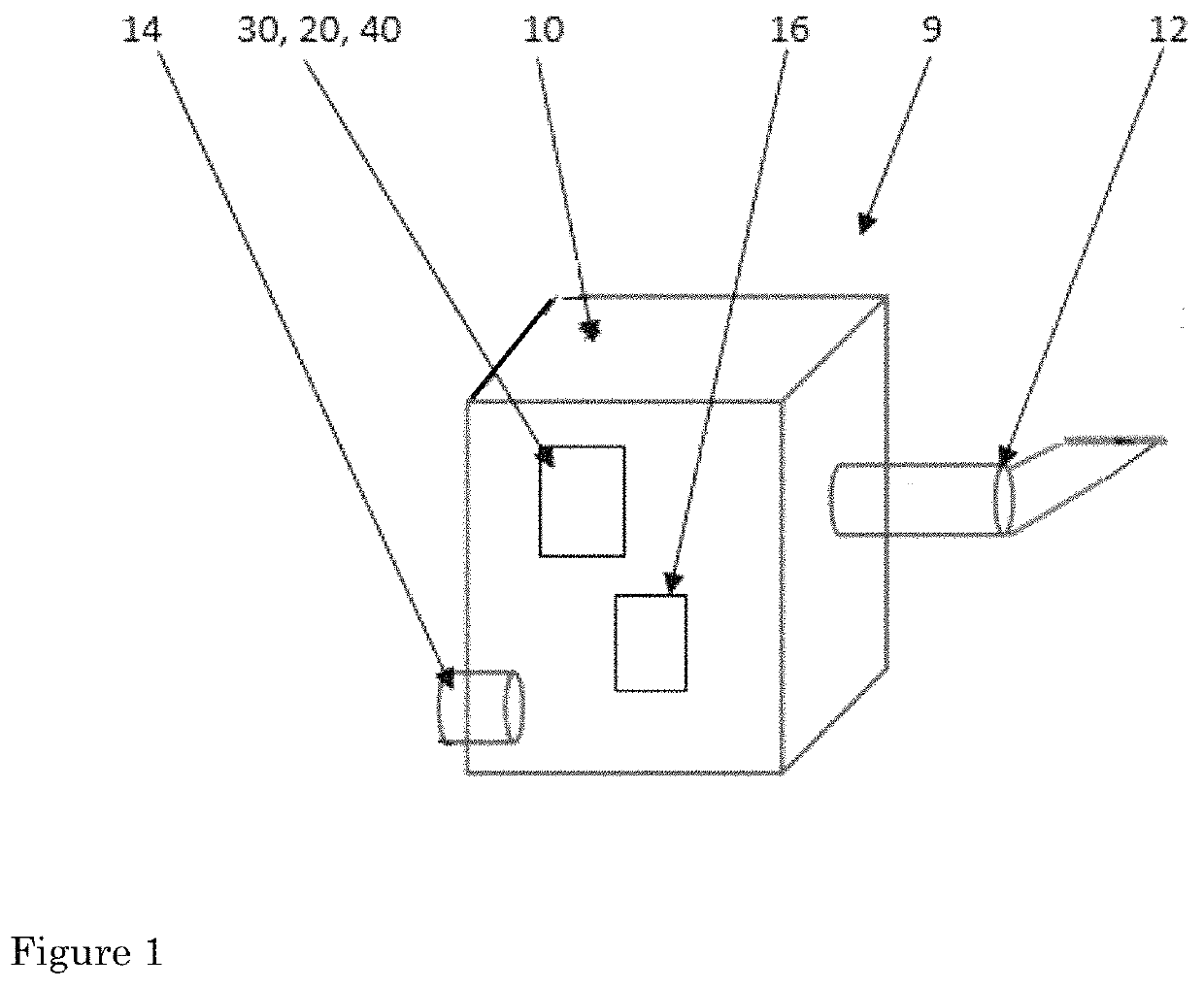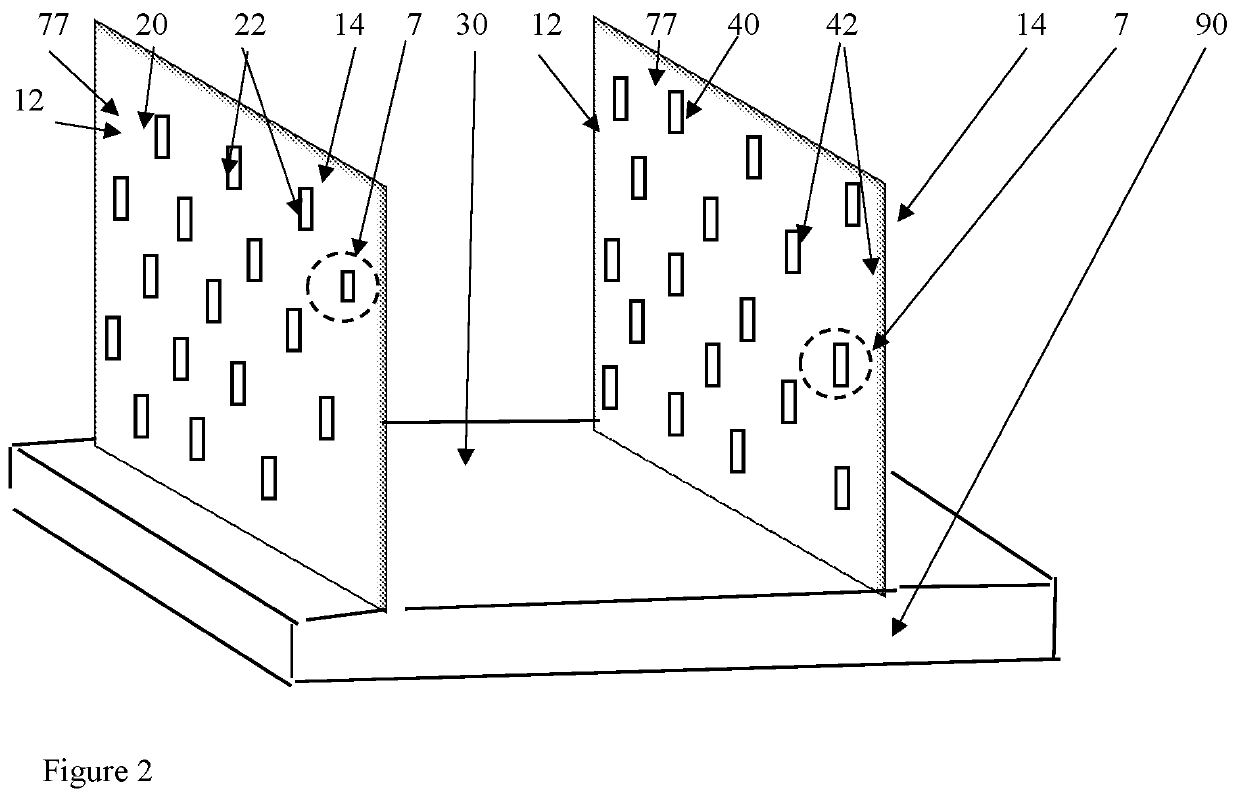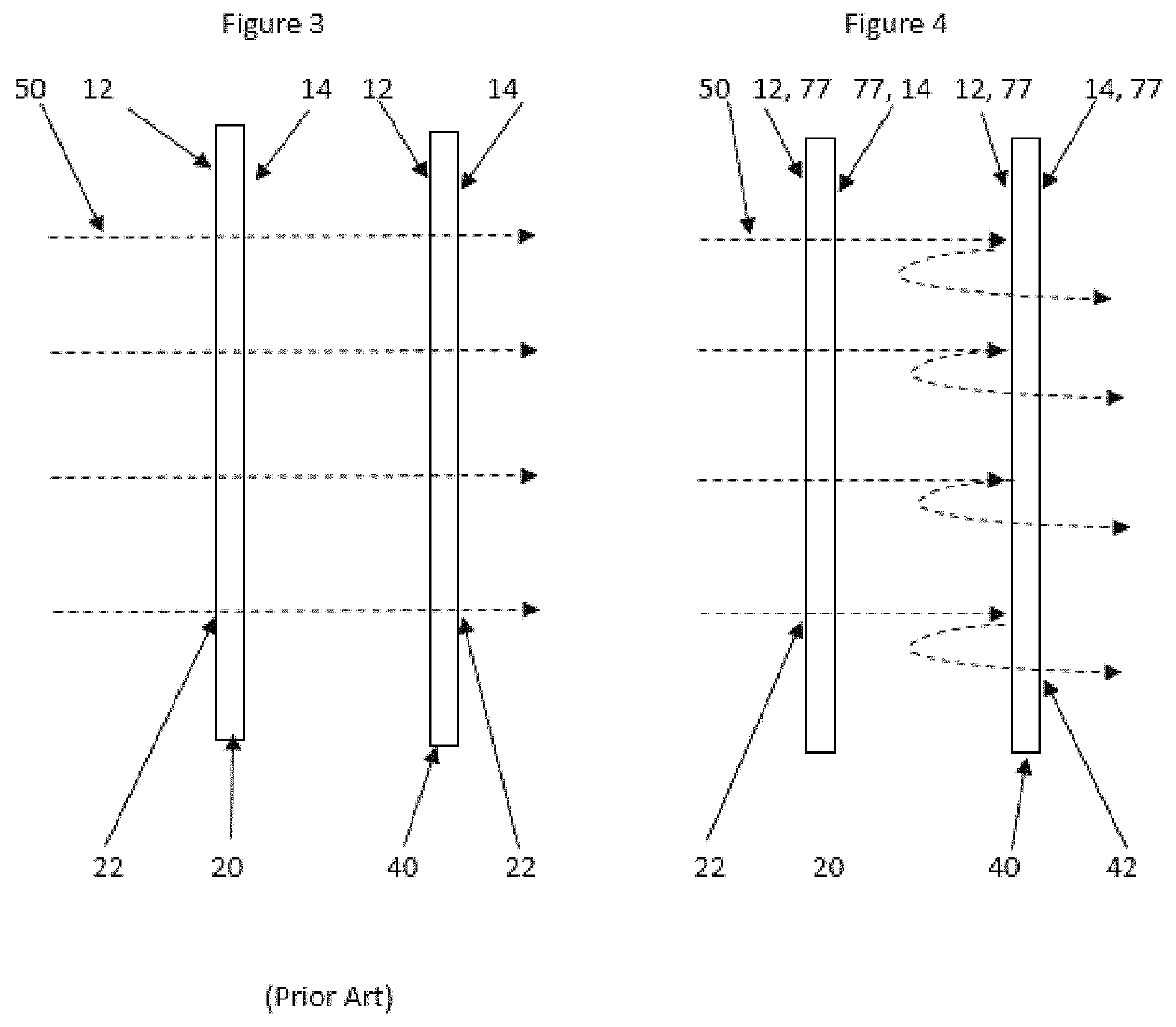Polymerized metal catalyst air cleaner
- Summary
- Abstract
- Description
- Claims
- Application Information
AI Technical Summary
Benefits of technology
Problems solved by technology
Method used
Image
Examples
Embodiment Construction
[0040]The current invention is directed toward a polymerized metal catalyst air cleaner device 9 having an electrically charged air filter unit. Each electrically charged air filter unit has at least two metallic plates, and each metallic plate has a width (w), length (l) and thickness (h), wherein the thickness is ultrathin and has a thickness that ranges from 10 microns to 10 millimeters, or 50 microns to 5 millimeters, or 100 microns to 3 millimeters or 500 microns to 2 millimeters. width and length of each metallic plate defines an air contacting surface 12 and an air releasing surface 14 wherein the air contacting surface and the air releasing surface are separated by the thickness of each metallic plate. The metallic plate is copper plated steel, copper, or copper alloy; and contains numerous apertures 22 or 42 that extend from the metallic plate's air contacting surface 12 to the air releasing surface 14. Each metallic plate in the current invention is commonly called expande...
PUM
 Login to View More
Login to View More Abstract
Description
Claims
Application Information
 Login to View More
Login to View More - R&D
- Intellectual Property
- Life Sciences
- Materials
- Tech Scout
- Unparalleled Data Quality
- Higher Quality Content
- 60% Fewer Hallucinations
Browse by: Latest US Patents, China's latest patents, Technical Efficacy Thesaurus, Application Domain, Technology Topic, Popular Technical Reports.
© 2025 PatSnap. All rights reserved.Legal|Privacy policy|Modern Slavery Act Transparency Statement|Sitemap|About US| Contact US: help@patsnap.com



